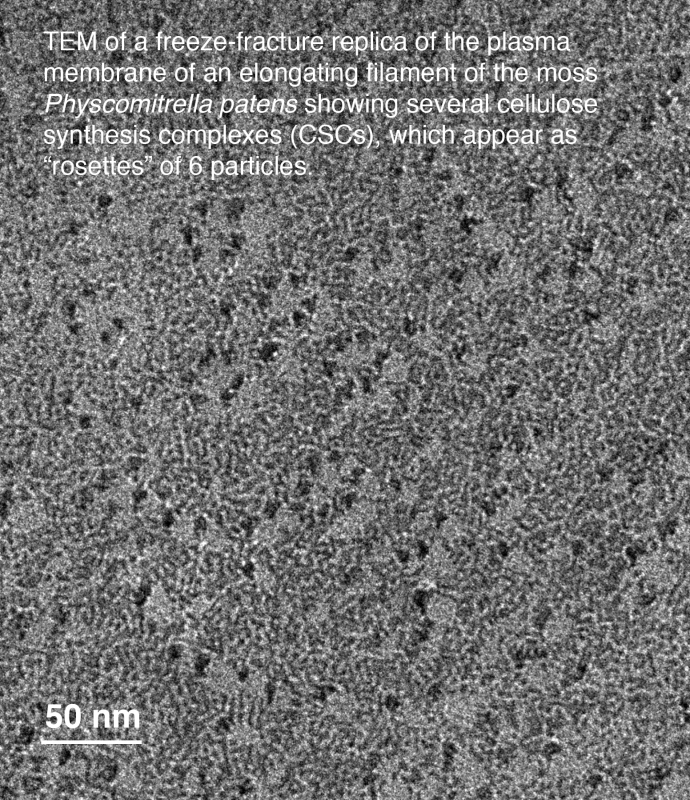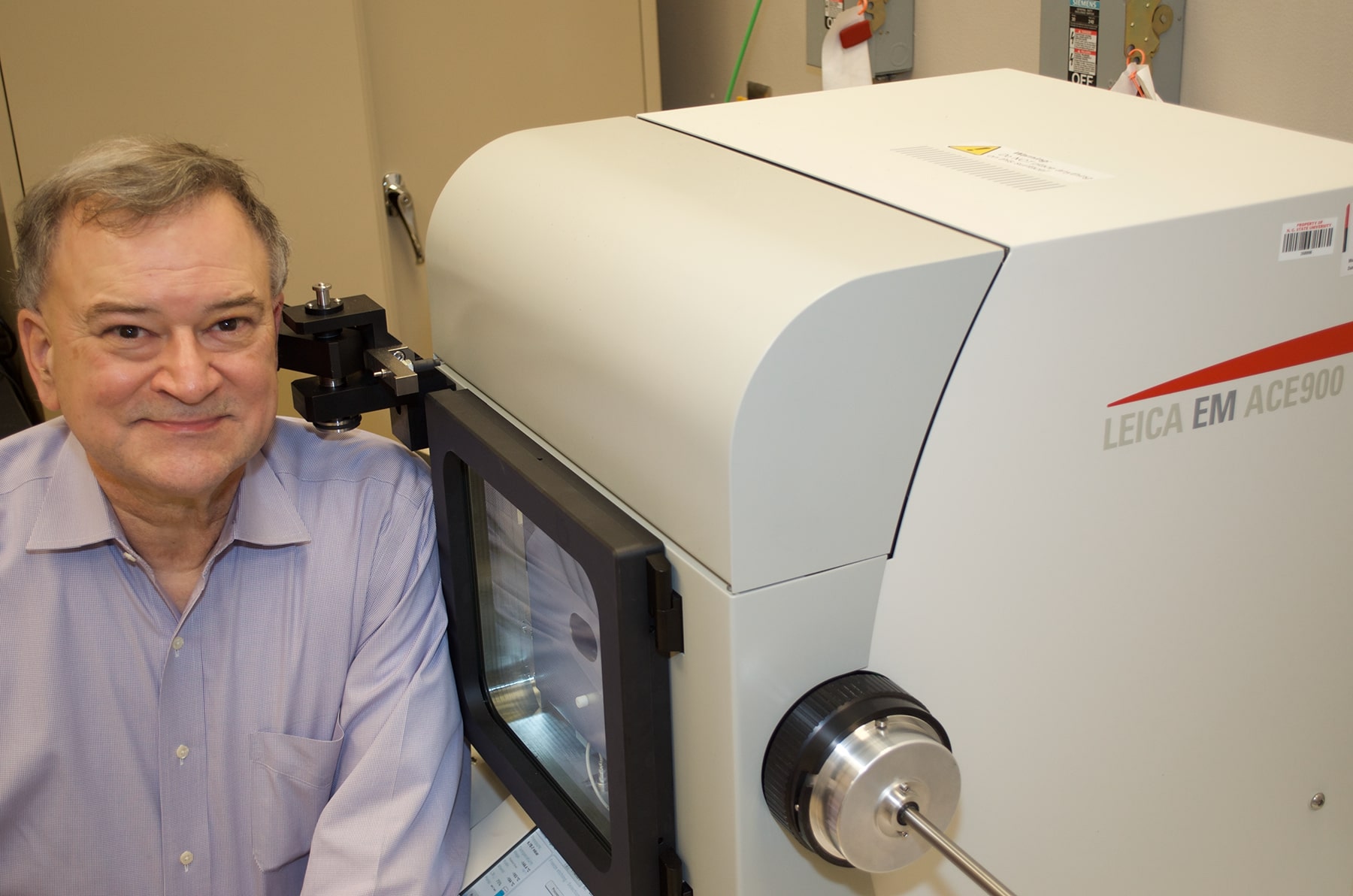Tell me a little about yourself!
I am a Professor of Plant Biology in NC State’s Department of Plant & Microbial Biology. I began my career using transmission and scanning electron microscopy to study development in an unusual ciliated protozoan where the individual cells aggregate to form an aerial fruiting body. I continued using electron microscopy as a research tool during my postdoctoral years to study cell biology of chytrid aquatic fungi and systematics of soil amoebae. I was on the faculty at Texas Tech University for 18 years before coming to NC State. During that time, my work shifted to studying cellulose biosynthesis in the cellular slime mold Dictyostelium discoideum. TEM and SEM continued to play a role in my work, and we generated images that continue to be used by the Dictyostelium research community and in textbooks. I came to NC State in 2003 as a full-time administrator, serving as the first permanent director of the University Honors Program. When I left that position in 2015, I returned to being a full-time faculty member, although I still have an administrative role as the Director of Graduate Programs in Plant Biology. My full-time administrative position had brought an end to my research, so I thought the best way to get back into active research was to join a new project in the lab of my colleague (and wife), Dr. Candace Haigler, Professor of Crop Science and Plant Biology.
What primary instrument(s) are you using for your research and what do you like about it?
The main instruments I have been using are the brand-new Leica ACE900 freeze-fracture instrument and the FEI TALOS F200X transmission electron microscope. My prior experience with freeze fracture and TEM was long ago. The automation and process efficiency of the ACE900 are greater than prior freeze-fracture instruments I have used. The TALOS is probably five generations beyond the microscopes I used, so it has been a revelation. I am sure the day will come when I like these instruments—at the moment we are still in that awkward stage of getting acquainted!
What have you been researching and how is it impacting the community?
Among other things, freeze-fracture enables the visualization of transmembrane complexes in cellular membranes. In plants, there is a characteristic structure associated with cellulose synthesis, called the cellulose synthesis complex (CSC), which is visualized as a ‘rosette’ with 6-fold radial symmetry. We are using a model plant, the moss Physcomitrella patens, to study the organization, distribution, and morphology of rosette CSCs in the plasma membrane. Eventually, we hope to visualize morphological differences in CSCs where the constituent cellulose synthase enyzmes have been modified. We will also be doing freeze-fracture of plant protoplasts to determine if there are morphological differences in CSCs responsible for the formation of the primary and secondary plant cell walls, which would in turn potentially modulate the structure of cellulose microfibrils.
Cellulose is the most abundant macromolecule in nature, providing an irreplaceable part of renewable biomaterials and biomass. As the major component of plant cell walls, cellulose is fundamentally important in plant growth and development. Cellulose is also of great economic importance as the major component of biomaterials such as cotton and wood. Cellulose seems simple, being a homopolymer of glucose, but the glucose chains associate into partly crystalline, higher-order, structures called microfibrils. We are still in the early days of understanding how the properties of cellulose are controlled by cells. The goal of our work is to contribute to that fundamental understanding by seeking insights into how the organization of the particles in the rosettes determines the structural characteristics of the cellulose microfibrils.
What have you learned from your experience at AIF?
This has been my first prolonged experience in a multi-user, multi-instrument laboratory, so that has been a learning experience in itself. Getting myself back up to speed with current generation instruments has been fun and challenging. You might say that this old dog has been having to learn a lot of new tricks!
Best thing about AIF in 5 words or less?
Accessible, well-supported, cutting-edge instrumentation.
Is there a staff member at AIF that has helped you?
I work closely with Aaron Bell, who is a co-member of our plant freeze-fracture team. Our backgrounds overlap in both having done TEM of ciliates, so that has been fun. I appreciated Roberto Garcia’s efforts in getting everything set for the installation of the ACE900. Chris Winkler and Toby Tung have been very patient with my TALOS training! Thank you all!

